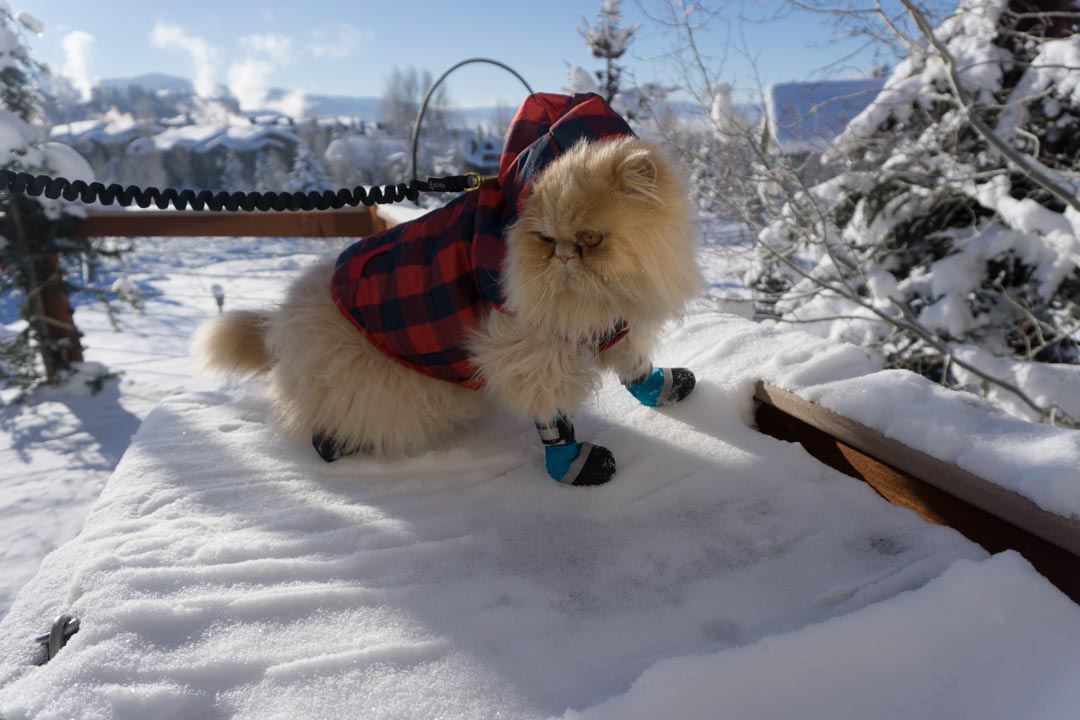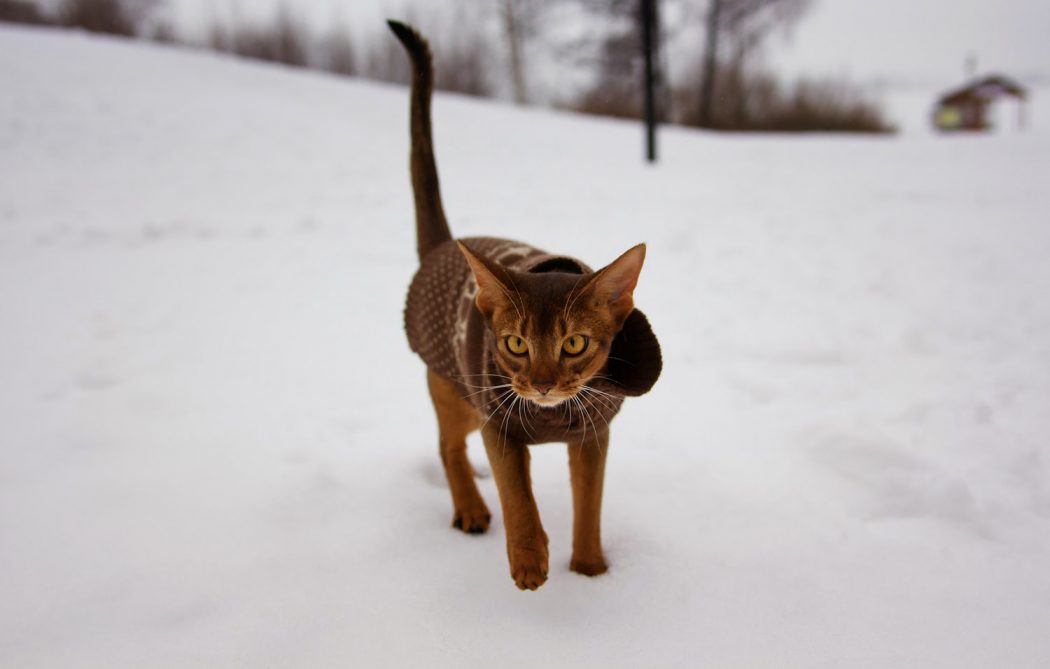Who among us hasn’t passed the pet clothing rack at Target, Petsmart or your local pet store and stared wistfully at the teeny tiny kitty clothing? Many, if not most, of us have, and some of us may have even attempted to have our furballs don wedding attire or Halloween costumes (guilty). It’s a cute look for Instagram, but is pet clothing necessary for cats, especially during the winter months?
Best-dressed list
We realize that your feline friend looks to-die-for in coats, booties and sweaters, but take care when dressing cats in winter wear. According to Los Angeles veterinarian Alisha Tran, “a light coat or sweater won’t hurt, but is unnecessary for short periods of cold.”
However, Tran advises that if a cat is going to be exposed to colder outdoor weather for longer periods of time, a light sweater may work well, and if you’re venturing out in the snow, a darker color may be best for a light-colored cat. Thick sweaters or coats are generally not a good idea though, especially for cats with thick, long coats. In fact, adding an extra layer to your cat’s already warm fur may cause your pet to overheat.
Booties may be a good option for taking kitties out in colder climates, especially if there;s snow or ice on the ground, but most cats aren’t comfortable having their paws covered, and even with training, your kitty may not want to wear shoes.
One caveat to this list: Hairless cats should always wear a sweater or coat when heading outdoors, especially during the colder time of year.

Floyd the Lion is used to donning booties when exploring his snowy Colorado home. (Photo: Floyd the Lion)
Cold-weather adventure tips
First, talk to your veterinarian to ensure it’s safe to take your cat outside during winter. Just as some people tolerate cooler temperatures better than others, the same goes for cats, and your pet’s health, age and body mass all play a role in tolerating winter weather.
Tran suggests helping your cat get used to the occasional winter adventure by taking your cat outside for “short time periods. Gradually lengthen that time period by 5 minutes each exposure.”
Keep in mind that however long a cat wants to remain outdoors is up to them, but taking your pet outside for at least a few minutes in the winter shouldn’t be a problem as long as you keep an eye on your cat to make sure the temperature isn’t getting to them.
MORE: Pawsome photos of cats enjoying a snow day
It’s not recommended to let your cat walk on snow or ice for more than an hour at a time though. Snow and ice can easily stick to kitty toes, so be on the lookout for signs of frozen paws. Long-haired cats are especially susceptible to catching snow and ice between their toes and along their furry bellies. Also, paw pads can crack from prolonged explore to snow and ice, so keep your winter adventures short.
Finally, try to avoid areas that may be contaminated with antifreeze, salt or deicers. These chemicals can irritate the pads of a cat’s feet and be potentially lethal if ingested during grooming. When your adventure is over, check your cat’s feet for cracks, redness or irritation and wipe her paws with a damp towel.

Jesper’s thick fur keeps him warm while he adventures in Norway. “He’s been used to the winter season since he was a kitten,” said Aina Stormo. (Photo: Aina Stormo)
How to tell when your cat is cold
Is your kitty shivering? Is he lifting or holding his paws up, almost as if he’s in pain? Does your cat seem to be looking for warm spots or shelter? These are surefire signs that it’s too cold for your kitty, and you should bring him indoors ASAP.
Familiarize yourself with the signs of hypothermia in cats, and remember to stay close to shelter so you can quickly get inside and warm up.
Fun, inside and out
Even if your kitty is bundled up as much as possible, sometimes it’s just altogether too cold to take your cat outside. So why not have an indoor adventure instead? There are plenty of fun plenty of fun activities you can enjoy with your furbaby that don’t involve donning extra layers or trekking through snow.





